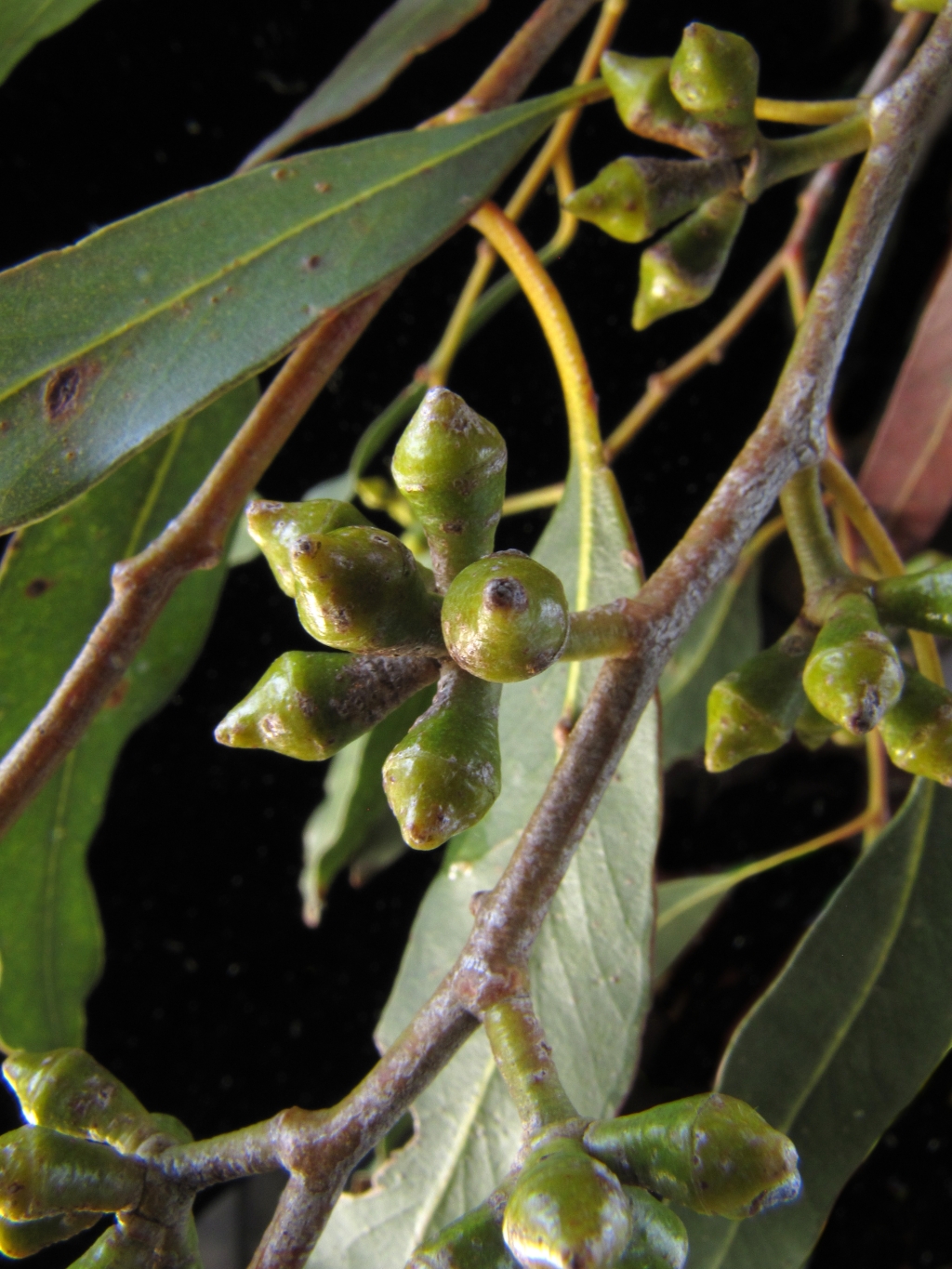Eucalyptus brookeriana
A.M.GrayTree to 40 m tall; bark rough, fibrous for lower 1–6 m, smooth above. Juvenile leaves petiolate, soon alternate, ovate to oblong or orbicular, crenulate, to 14 cm long, 8 cm wide, discolorous, glossy, green, glandular; adult leaves petiolate, alternate, ovate to lanceolate, to 15 cm long, 2.5 cm wide, more or less concolorous, glossy, green; reticulation dense, with numerous, mostly intersectional oil glands. Inflorescence axillary, unbranched, peduncle to 1.2 cm long, 7-flowered; buds pedicellate, diamond-shaped to slightly elongate, to 1 cm long, 0.5 cm diam., scar present; operculum conical or beaked; stamens inflexed; anthers dorsifixed, cuneate; ovules in 4 vertical rows; flowers white. Fruit pedicellate, obconical to cupular, to 0.8 cm long, 0.7 cm diam.; disc level to descending; valves 3 or 4, rim level or slightly exserted; seed black, flattened-ellipsoid, lacunose, very shallowly reticulate, hilum ventral. Flowers summer–autumn.
GleP, Brid, VVP, VRiv, GipP, OtP, WaP, Gold, CVU, NIS, EGL, EGU, HSF, HNF, OtR. Also Tas. It occurs in two areas, on the northern foothills of the Otway Ranges, and north of the Great Dividing Range in the Bells Reef-Trentham area.
In Tasmania, where the typical form of the species is found, the adult leaves are distinctly discolorous. Eucalyptus brookeriana and E. strzeleckii have been confused with E. ovata, but E. brookeriana at least, differs in the high cineole content of the leaves compared with the very low oil yield (particularly cineole) of E. ovata. Intermediates between E. ovata and E. brookeriana are discussed under E. ovata.
Brooker, M.I.H.; Slee, A.V. (1996). Eucalyptus. In: Walsh, N.G.; Entwisle, T.J., Flora of Victoria Vol. 3, Dicotyledons Winteraceae to Myrtaceae, pp. 946–1009. Inkata Press, Melbourne.
 Spinning
Spinning
